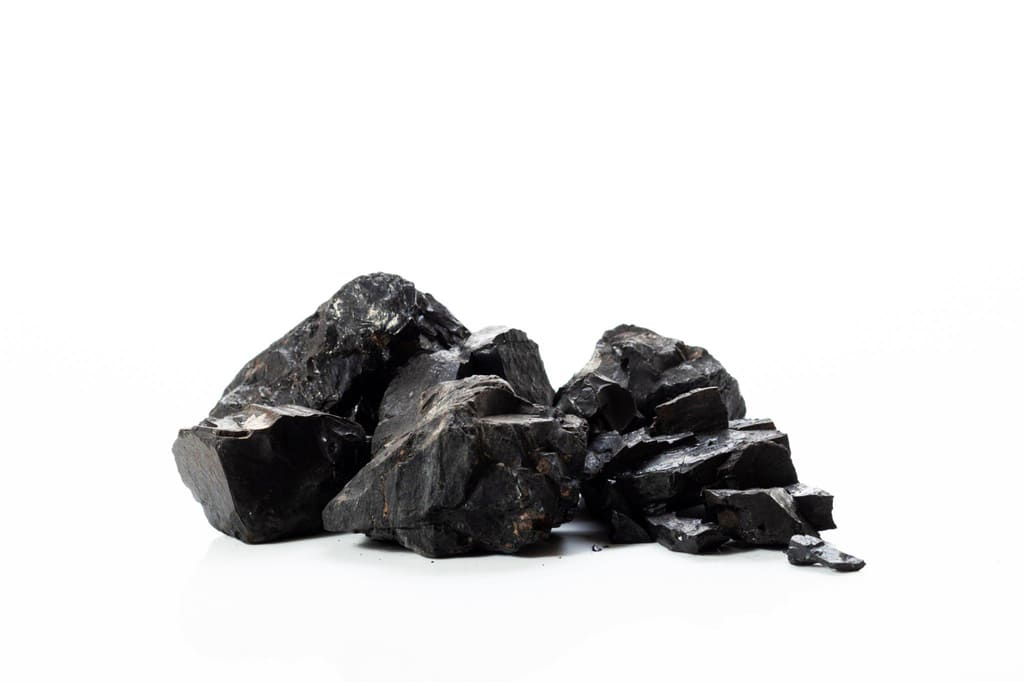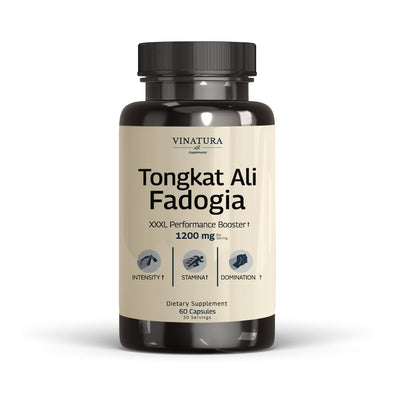
15 Shilajit Benefits, Usage, Dosage And Everything
If you consider yourself a health enthusiast, then chances are that you’ve heard of Shilajit. Every impressive supplement found in the Eastern world offers many exciting benefits – and Shilajit is no different!
For centuries, this mysterious natural mineral compound has been used by ayurvedic healers to support numerous bodily functions but lots of people don’t realize why it works.
With its surging popularity among health-conscious individuals, we wanted to dive deep into Shilajit's benefits, dosage, and usage so you can learn all about how best to utilize this niche superfood for your ends!
Before exploring further, please read the disclaimer located at the end of this webpage.
What Is Shilajit?
Shilajit, also known as Mumijo or Mineral Pitch, is a sticky black substance that is found in the mountains of Asia. It is a mineral deposit that oozes from the cracks of rocks and cliffs during hot weather. Shilajit has been used for centuries in Ayurvedic medicine and is known for its numerous health benefits.
Shilajit contains humic acid and fulvic acid, two components that offer numerous health benefits to humans over centuries of formation.

Shilajit is typically collected in the summer months when the mountain snow begins to melt. It is found oozing out of cracks and crevices in the rocks, and it can also be found in sediment deposits. Shilajit collectors carefully gather this resin with specialized tools and techniques, ensuring minimal environmental impact.
History and Cultural Significance
Shilajit has been used in traditional Ayurvedic medicine for over 3,000 years. It is believed to be one of the most important natural medicines in Indian culture and is often referred to as “the conqueror of mountains and destroyer of weaknesses". It was also highly valued by ancient civilizations such as the Greeks, Persians, and Chinese for its medicinal properties.
Read more: What Does Shilajit Taste Like? How To Reduce Shilajit Favor?
Shilajit Resin Chemical Composition
Shilajit is a complex substance that is incredibly rich in nutrients, containing over 85 minerals and trace elements. It is not a mineral tar or resin, but rather a unique compound consisting of various elements and substances. Shilajit has a high viscosity and easily dissolves in water (though not in ethanol).
The mineral composition of Shilajit can vary depending on its geographical origin. It includes essential minerals such as calcium, magnesium, sodium, iron, chromium, lead, and more than 2 other elements. Additionally, Shilajit contains hydrocarbons, proteins, amino acids, alcohols, and various other organic compounds.
One noteworthy aspect is that Shilajit is composed of 60-80% humic substances, including humic acid and fulvic acid. Along with its mineral content of approximately 15-20%, Shilajit is abundant in vital nutrients like mineral salts, amino acids, and other organic elements that contribute to shilajit resin benefits.
What are the Shilajit Benefits for Health?
Supporting Alzheimer’s Disease Management
Alzheimer’s disease is a degenerative brain disorder that affects millions of people worldwide. It is characterized by memory loss, cognitive decline, and impaired motor functions. While there is no known cure for Alzheimer’s disease, studies have shown some Shilajit health benefits in managing the condition.
Shilajit resin's potential as a preventative supplement for Alzheimer's disease was studied by Carlos Carrasco-Gallardo and his team, their findings being published in the International Journal of Alzheimer's Disease [15]. This research shed light on the potentially profound impact of Shilajit in the fight against this debilitating brain disorder.

A subsequent study led by Carrasco-Gallardo delved into the combined effectiveness of Shilajit and a complex of Vitamin B in targeting cognitive disorders [16]. This research further emphasized the therapeutic potential of Shilajit in managing brain health.
Moreover, an interesting study centered on the molecular mechanism of Andean Shilajit, which is derived from the Andes range in Chile, put forth the hypothesis that it could serve as an alternative treatment for Alzheimer's disease, or even act as an effective adjunct in treatment [17]. These findings pave the way for future research dedicated to unlocking Shilajit's full potential in Alzheimer's disease management.
Enhancing Brain Function And Focus
Aside from its potential in Alzheimer's disease management, Shilajit has also been found to have positive effects on overall brain health. It contains compounds that can cross the blood-brain barrier, potentially improving cognitive function and focus [21].

A systematic study conducted on extracts from Withania somnifera, commonly known as Indian ginseng, and Shilajit suggests that these two extracts exhibit a considerable impact on events in the cholinergic signaling pathway in the cerebral cortex and frontal cortex [18]. The cholinergic signaling pathway is involved in numerous brain functions, including memory and learning.
The research led by A.K. Jaiswal on the Shilajit benefits on memory, anxiety, and brain monoamines in rats further elucidates the effects of Shilajit on brain function [8]. Memory enhancement and cognitive function are not the only areas where Shilajit has proven beneficial.
Research shows that Shilajit can be beneficial in the management of cerebral edema, a condition characterized by the accumulation of excess fluid in the intracellular or extracellular spaces of the brain. This effect is particularly seen through the mechanism of blood-brain barrier disruption and intracranial pressure following a traumatic brain injury (TBI) [19].
Moreover, the influence of Shilajit resin on brain monoamines—neurotransmitters that regulate various physiological activities in the body—has also been recognized. This was highlighted in research conducted by S.K. Bhattacharya and S. Ghosal [20]. These neurotransmitters play an essential role in mood regulation, cognition, and the body's response to stress.
Combating Chronic Fatigue And Improving Energy Levels
As mentioned earlier, Shilajit resin as been traditionally used in Ayurvedic medicine to combat chronic fatigue. This is due to its ability to improve mitochondrial function and energy production in cells.

In a comprehensive review of the medicinal properties of Shilajit, the focus is on its positive effects on lowering serum cholesterol, liver cholesterol, serum triglycerides, and serum phospholipids. Shilajit is believed to stimulate the immune system, reduce chronic fatigue, and offer various other benefits such as countering immune disorders, addressing urinary tract issues, aiding in detoxification, and enhancing memory [21].
Another study explores Shilajit's effectiveness against Chronic Fatigue Syndrome (CFS) and highlights its positive impact on regulating the hypothalamic-pituitary-adrenal (HPA) axis, as well as preserving cellular function and integrity. The study suggests that by reversing behavioral symptoms caused by CFS and restoring cellular energy, Shilajit shows potential as a treatment for CFS, with cells being a potential target [22].
Enhancing Male Fertility and Testosterone Levels
The role of Shilajit in enhancing testosterone levels and male fertility has been demonstrated through extensive research. Its androgenic effects, particularly in testosterone production and sperm quality, have been scientifically supported in both human and animal studies [35].
This effect on fertility is not a recent discovery; Shilajit has been applied in traditional medicine practices across various countries, recognized for its fertility-enhancing properties. In India, for instance, Shilajit is known as "Vajikarak," an aphrodisiac [32].
Experiments have been conducted to evaluate the impact of Shilajit at varying dosages, including 50mg, 100mg, and 200mg/Kg BW. Histopathological evaluations of the testes revealed that Shilajit was successful in restoring the sperm production process, highlighting its powerful androgenic effects and its potential role in combating cadmium-induced infertility [32].
Moreover, research involving both male and female mice has suggested Shilajit as a promising agent for reproductive support, owing to its ability to enhance both sperm and egg quality in adult mice [31]. Clinical evaluation of pure Shilajit conducted over 90 days, showed a significant increase in testosterone levels among healthy volunteers [33].
In a study evaluating "Testosterone boosters" (TB), Shilajit resin was listed alongside other substances known for enhancing testosterone levels, such as Tongkat Ali, ashwagandha, and fenugreek [34]. This body of research underscores the potential of Shilajit as a natural supplement for boosting male fertility and testosterone levels.
Read more: 10+ Shilajit Benefits For Males You May Surprised
Alleviating Muscle Fatigue And Promoting Physical Performance

As a popular supplement among athletes and fitness enthusiasts, Shilajit has ability to alleviate muscle fatigue and enhance physical performance. This is because Shilajit contains high levels of fulvic acid, which helps improve the transportation of nutrients and oxygen to the muscles, resulting in increased endurance and reduced fatigue during physical activity.
Studies have shown that Shilajit can help reduce stress and anxiety. This is due to its adaptogenic properties, which allow the body to better cope with physical and emotional stress. Shilajit has been found to increase levels of dopamine, a neurotransmitter associated with pleasure and motivation, and serotonin, a hormone responsible for regulating mood.
A comprehensive study titled "Shilajit (Mumie): Current Status of Biochemical, Therapeutic, and Clinical Advances" enlisted the stress-relieving effects of Shilajit, among other benefits such as enhanced memory, energy, and antioxidative properties [7].
Another study conducted on mice demonstrated that acute treatment with Shilajit had a significant impact on mouse brains, effectively reducing anxiety [8]. Further research led by Dinesh Kumar Surapaneni and his team found that Shilajit reversed the increase in anxiety induced by Chronic Fatigue Syndrome (CFS) during immobility and reduced climbing behavior.
It also managed to alleviate anxiety in the Elevated Plus Maze (EPM) test in mice. This research was grounded in the regulation of the hypothalamic-pituitary-adrenal axis and mitochondrial bioenergetics in mice [9].
Antioxidant, Anti-inflammatory
Shilajit contains high levels of fulvic acid, which is a potent antioxidant that helps fight against free radicals. It also has anti-inflammatory properties that can help reduce inflammation in the body. Additionally, Shilajit's mineral content makes it an excellent source of essential nutrients that promote healthy aging.
Research on Shilajit synthesis has shown that there have been animal studies that demonstrate the antioxidant and anti-inflammatory activities of Shilajit, as well as its support in ATP production by mitochondria [1].
Another study found that a dosage of 50 mg/kg of Shilajit reduced carrageenan-induced inflammation in mouse paws by approximately 75%. When the dosage was increased to 200 mg/kg twice a day, the effectiveness significantly contributed to anti-ulcer activity in the mouse stomach [2].
An in vitro study evaluating cell toxicity and anti-inflammatory properties of Shilajit by Nutraceuticals recognized its effectiveness in anti-inflammatory properties and its non-toxic nature when tested on murine fibroblast cell lines [3].
Additionally, the anti-inflammatory efficacy of Shilajit was also assessed in a study on ten dogs with a dose of 500 mg twice a day for 5 months. The study recorded the pain-reducing effectiveness that Shilajit provided [4].
Addressing The Challenges Of Aging
As mentioned, Shilajit is rich in fulvic acid and trace minerals, making Shilajit as an excellent anti-aging supplement. It helps reduce the effects of aging on the body by improving cellular function and promoting healthy tissue regeneration. Furthermore, Shilajit's antioxidant properties can help reduce the damage caused by oxidative stress, a major contributor to aging.
Shilajit has been historically revered for its anti-aging benefits, a claim that continues to find support in contemporary scientific research. A comprehensive review of the "Therapeutic Potentials of 'Shilajit Rasayana'" shed light on its anti-aging properties.
This study also highlighted additional benefits including stabilization of blood sugar levels, rejuvenation of the urinary tract, and improved cognitive functions [5]. Furthermore, another scientific study pinpointed the anti-inflammatory and antioxidant properties of Shilajit as the key contributing factors to its anti-aging activity [6].
Effective In Reducing Gastric Ulcers
Shilajit has been traditionally used in Ayurvedic medicine to treat gastrointestinal issues, including gastric ulcers. This is due to its ability to reduce inflammation and inhibit the growth of harmful bacteria in the stomach. Additionally, Shilajit's antioxidant properties can help protect the stomach lining from damage.
A study conducted in mice with a dosage of 100 mg/kg of Shilajit administered twice daily observed a significant reduction in gastric ulcers. The research also noted Shilajit's anti-inflammatory effectiveness against acute carrageenan-induced paw edema, granuloma pouch, and joint inflammation due to supplemental drug use in the mice [10].
In addition, another study performed with mice observed a substantial decrease in the size and quantity of gastric lesions upon administering Shilajit. This was indicated by oxidative stress parameters. Interestingly, the study revealed that the water extract of Shilajit had an effect equivalent to that of omeprazole, a commonly used medication for treating gastric issues [11]
Potential Benefits For Liver Health

The liver is a vital organ responsible for detoxifying the blood, producing bile for digestion, and storing essential nutrients. Dysfunction of the liver can lead to various health issues. Studies have shown that Shilajit may offer benefits in promoting liver health.
Research has demonstrated that Shilajit not only combats symptoms of chronic fatigue but may also possess potential benefits for combating liver cancer [22].
A study that assessed the impact of Shilajit at varying dosages - one at a higher concentration and the other at a lower concentration - determined that Shilajit can amplify the effects of chemotherapy and minimize liver and kidney damage triggered by metastasis in bone cancer [23].
Another study conducted by Baran Ghezelbash and his team revealed that Shilajit can ameliorate the histological changes in the liver induced by NAFLD (non-alcoholic fatty liver disease). This research reaffirms the potential utility of Shilajit as a powerful agent in the treatment of NAFLD, specifically diet-induced non-alcoholic fatty liver disease [24].
Potential Shilajit Benefits for Heart Health

While research about the cardiovascular benefits of Shilajit is not as extensive, some studies have alluded to the potential benefits of Shilajit for heart health. A significant study titled "Cardioprotective Effect of Mumie (Shilajit) on Experimentally Induced Myocardial Injury" concluded that Shilajit exhibits cardioprotective properties by counteracting the detrimental effects of ISO (isoproterenol), a compound used to induce heart damage in mice [25].
Furthermore, a study published in the World Journal of Pharmaceutical Research led by Sidhartha Bora, entitled "Formulation And Evaluation Of Sildenafil Fast Dissolving Tablets Combined With Shilajit Using Croscarmellose And Crospovidone As Superdisintegrants," revealed that mice administered Shilajit before heart injury induced by isoproterenol experienced less cardiac damage [26].
Aiding In Weight Management For Obesity And Diabetes
Obesity and diabetes are two conditions that have reached epidemic proportions globally. Both conditions are linked to various health concerns, making their management crucial. The potential of Shilajit in aiding weight management for obesity and regulating blood sugar levels for diabetes has been explored in several studies.

A study titled "Effect of Shilajit on Obesity in Hyperlipidemic Albino Rats" concluded that a dose of 200 mg could effectively reduce body weight. This study observed that mice orally administered 200 mg/kg and 400 mg/kg for 90 days did not reveal any adverse effects on the liver, kidneys, or behavior [28].
In addition, an analysis of the inorganic composition and antioxidant activity of Shilajit suggests that Afghani Shilajit has properties potentially combating obesity. This is achieved by preventing dysfunction of fat cells, leading to improvements in blood levels of glucose and insulin, and enhancing glucose uptake by activating certain pathways [29].
Shilajit has shown potential in reducing the activity of superoxide dismutase induced by STZ, suggesting its ability to potentially prevent the onset of diabetes in adulthood [30].
Furthermore, a separate study on processed Shilajit (PS) supports the idea that combining PS with insulin can enhance the ability to lower blood sugar levels caused by insulin. Additionally, long-term use of a carefully determined dose of PS has been found to inhibit the development of diabetes induced by STZ [31]. These findings highlight Shilajit's potential to assist with diabetes management.
Managing Symptoms Of High-Altitude Sickness
High-altitude sickness, also known as acute mountain sickness (AMS), is common among individuals who travel to high altitudes. AMS can cause headaches, nausea, and dizziness and can progress to more severe conditions if not managed promptly.
Research has shed light on Shilajit's potential in managing high-altitude sickness. A significant study titled "Shilajit: A Panacea for High-Altitude Problems" reveals that Shilajit, composed of humus, organic plant material, and fulvic acid, harbors beneficial molecules that facilitate nutrient transport to deep tissues. It aids in alleviating symptoms of fatigue and lethargy and assists in coping with high-altitude stress [36].
This research also delves into Shilajit's potential in addressing High-Altitude Pulmonary Edema (HAPE). The mechanism of Shilajit in dealing with HAPE is postulated to stimulate blood vessel constriction for energy production and to guard against exposure to cold and oxygen deficiency.
It also suggests that optimal Shilajit blood concentrations and treatment effectiveness can be achieved by taking Shilajit in powdered form, mixed with milk twice a day [36].
Furthermore, the study indicates that Shilajit has been utilized in treating Altered Mental Status (AMS) and High Altitude Cerebral Edema (HACE), further underscoring its potential in managing symptoms of high-altitude sickness [36].
Managing Iron Deficiency Anemia
Iron deficiency anemia is a common condition that arises from inadequate iron intake or absorption, leading to low levels of hemoglobin in the blood. While iron supplements are commonly prescribed for this condition, they can have adverse effects on the gastrointestinal tract.
Shilajit, rich in humic acid and iron, has long been used in traditional medicine as an effective remedy for iron deficiency anemia and chronic fatigue [37]. It boasts over 85 distinct minerals including fulvic and humic acids that provide numerous health benefits.
Notably, a research paper titled "Shilajit: A Humic Matter Panacea for Cancer" by Kishor Pant et al. delves into the potential benefits of Shilajit for iron deficiencies. The study involved a 3-month experiment on mice, which concluded that Shilajit is safe for long-term use and can effectively help combat anemia and iron deficiencies [38].
Providing Relief From Intestinal Troubles
Many studies have explored the benefits of Shilajit for intestinal troubles, often focusing on its anti-inflammatory properties.
A study by Neelima S and colleagues titled "Effect of Shilajit on EXPERIMENTAL MODELS OF INFLAMMATORY BOWEL DISEASE IN RATS" found that pre-treatment of rats with Shilajit significantly protected against the increase in intestinal MDA induced by Indo. This effectiveness led the authors to recognize Shilajit as possessing antioxidant properties and providing protection against intestinal inflammation [39].
Furthermore, research conducted by Fatemeh Alimahdi and colleagues demonstrated that Shilajit can reduce inflammation to a greater extent by creating more appropriate changes in cytokines compared to sulfasalazine, a commonly used medication for conditions related to intestinal inflammation and colitis [40].
Potential Shilajit Side Effects
A study on the effectiveness and toxicity of Shilajit (Munie, Moomiyo) by Sidney J. Stohs synthesized related research and concluded that most studies indicated Shilajit is safe and generally free from side effects.
Some study results summarized by the author supported the safety of Shilajit, showing no adverse effects in testing processes. For instance, Anisimov and colleagues conducted a 90-day study on mice at doses of 200 mg/kg and 1000 mg/kg, which did not reveal any side effects of Shilajit on the kidneys, heart, liver, blood cells, nervous system, or endocrine system [13].
Another study on human safety with Shilajit that had been processed, conducted on healthy human volunteers with a dose of 250 mg twice a day for 90 days, also did not report any adverse effects [13].
When properly purified and used in the correct dosage, Shilajit is generally considered safe [12]. However, studies have shown that consuming unprocessed Shilajit can be toxic [12].
It's important to note that certain Ayurvedic products, including Shilajit and others manufactured in India, may contain heavy metals, minerals, or even gemstones [12]. Additionally, research suggests reviewing clinical reports of lead poisoning cases in patients who have used Ayurvedic anti-aging remedies [12].
Recommended Dosage
There isn't a standard recommended dosage for Shilajit, as it depends on various factors such as age, gender, and overall health. It's always best to consult a healthcare professional before starting any new supplements.
The general suggested dose is between 300-1000 mg per day in capsule form [13]. Nevertheless, certain studies have administered doses as high as 2 grams per day. For instance, a placebo-controlled study encompassing 20 healthy subjects over 45 days utilized capsule form, yielding no notable adverse effects [14].
Shilajit is also available in other forms such as powder and liquid. In these cases, it's recommended to follow the dosage instructions provided by the manufacturer.
How To Use Shilajit?
Shilajit can be consumed in various forms such as capsules, powder, and liquid. The most common method of consumption is through oral ingestion, by mixing the recommended dosage with water or milk.
Another popular way is dissolving Shilajit in warm water and drinking it on an empty stomach in the morning. This method is believed to enhance the absorption and effectiveness of Shilajit.
For topical use, Shilajit can be mixed with a carrier oil such as coconut or almond oil and applied to the skin. It's recommended to test on a small patch of skin first before applying it to larger areas to avoid side effects of Shilajit.
Potential Precaution And Drug Interaction
While Shilajit is generally considered safe, there are certain precautions and potential drug interactions to keep in mind.
Individuals with underlying health conditions such as gout, kidney stones, or high uric acid levels should consult a healthcare professional before using Shilajit.
Additionally, Shilajit may interact with certain medications such as blood thinners, antidiabetic drugs, and antibiotics. It's important to inform your healthcare provider about any supplements you are taking before starting a new medication.
What Will You Receive When Taking Shilajit?
When taking Shilajit, you can expect to receive various benefits depending on your health concerns and the quality of the product. Some potential benefits may include improved energy levels, better brain function, relief from joint pain and inflammation, and relief from symptoms associated with iron deficiency anemia.
Additionally, Shilajit may also provide antioxidant properties and protect against intestinal inflammation. With proper dosage and usage, Shilajit can be a valuable addition to your supplement regimen.
Overall, continued research on this powerful natural substance is needed to fully understand its potential benefits and uses. So far, it's proving to be a promising option for those seeking alternative and natural ways to support their health.
How To Store Shilajit Resin?
To store Shilajit resin, it's important to keep it in a cool and dry place. This will help prevent any potential mold growth or changes in its consistency. It's also recommended to keep the resin in an airtight container to maintain its freshness and potency.
Avoid storing Shilajit in direct sunlight or high temperatures, as this can affect its quality. When stored properly, Shilajit resin can last for several years without losing its effectiveness.
Final Thoughts
Shilajit has been used in Ayurvedic medicine for centuries and is known for its numerous potential health benefits. However, it's important to always choose a high-quality, purified version of Shilajit and consult with a healthcare professional before incorporating it into your daily routine. With proper usage and storage, Shilajit benefits can be used as a valuable addition to your health regimen.
You may also like: 7 Best Shilajit Supplements to Improve Immune System
Frequently Asked Questions
Is Shilajit Captures Better than Shilajit Original?
Original Shilajit is widely regarded as the purest form of Shilajit. However, it is important to note that unprocessed Original Shilajit may have the potential to cause undesired side effects. For this reason, many individuals opt for the use of Shilajit Captures, which are not only considered safe but also effective. These captures undergo quality checks by the manufacturer and regulatory authorities, ensuring their reliability and efficacy.
Is Shilajit Captures Legal?
Shilajit capsules are legal and are widely used as a dietary supplement. They are commonly available in health stores and online marketplaces. However, it's always recommended to purchase from reputable sources to ensure product quality and safety.
How Many Shilajit Captures Should I Take?
The recommended dosage of Shilajit capsules can vary, but commonly, it's suggested to take one 300mg capsule, twice daily. However, it's always a good idea to consult with a healthcare professional before starting any new supplement regimen.
How To Identify the Original Shilajit?
Identifying the original Shilajit involves checking its color, texture, and solubility. Genuine Shilajit is typically blackish-brown, semi-solid, and completely dissolves in warm water without leaving any residue. Always purchase from reputable sources to ensure authenticity.
What Is Shilajit Made Of?
Shilajit is composed of humus and organic plant material that has been compressed by layers of rock over time. It also contains a range of minerals, fulvic and humic acids, amino acids, and trace elements like selenium.
Does Shilajit Help with Managing High-Altitude Cerebral Edema?
Shilajit has been traditionally used to help the body adapt to high altitudes and it might aid in reducing symptoms of high-altitude cerebral edema due to its anti-inflammatory and antioxidant properties.
Can I Take Shilajit With Ashwagandha?
Taking Shilajit and Ashwagandha together is generally considered safe, and they can complement each other's health benefits.
Does Shilajit Increase Sperm Counts?
Studies have suggested that Shilajit might enhance male fertility by improving sperm count and motility. More research is needed to fully understand its effects on fertility. However, individuals with underlying health conditions should consult a healthcare professional before using Shilajit for this purpose.
Can I Take Shilajit During Pregnancy?
Pregnant women should avoid taking Shilajit as there is not enough scientific evidence to determine its safety during pregnancy. Additionally, it may also interact with certain medications used during pregnancy.
Is Shilajit Safe For Children?
Shilajit is generally considered safe for children over the age of 12, but it's important to consult with a pediatrician before giving it to them. Dosage recommendations may vary based on their age and health concerns.
References
- 1. Stohs, S. J. (2013). Safety and Efficacy of Shilajit (Mumie, Moomiyo). Phytotherapy Research, 28(4), 475–479. https://doi.org/10.1002/ptr.5018
- 2. Bhavsar, S. K., Thaker, A. M., & Malik, J. K. (2016). Shilajit. Elsevier EBooks, 707–716. https://doi.org/10.1016/b978-0-12-802147-7.00051-6
- 3. Victoria, S., Rajkumar, K., Ravikumar Nesamani, Saravana Karthikeyan Balasubramanian, & Sekar Mahalaxmi. (2020). In vitro assessment of cytotoxicity and anti-inflammatory properties of shilajit nutraceutical: A preliminary study. Journal of Interdisciplinary Dentistry, 10(1), 24–24. https://doi.org/10.4103/jid.jid_2_20
- 4. Lawley S, Gupta Rc, Goad Jt, Canerdy Td, & Sr, K. (2013). Anti-Inflammatory and Anti-Arthritic Efficacy and Safety of Purified Shilajit in Moderately Arthritic Dogs. https://www.semanticscholar.org/paper/Anti-Inflammatory-and-Anti-Arthritic-Efficacy-and-Lawley-Rc/826f67184e8a41a29668a1609e2a178ba3bbcb65?p2df
- 5. Sukhbir Lal Khokra. (2009, August 8). Therapeutic Potentials of “Shilajit Rasayana”-A Review. ResearchGate; unknown. https://www.researchgate.net/publication/266968908_Therapeutic_Potentials_of_Shilajit_Rasayana-A_Review
- 6. Singh Gangwar, S., Thakur, R., & Sharma, R. (2017). Shilajit A Medicinal Mystery to Cure the Un-Cure Disease. Imperial Journal of Interdisciplinary Research (IJIR), 3(1), 2454–1362. https://www.serravit.com.tr/wp-content/uploads/2020/08/Shilajit-A-Medicinal-Mystery-to-Cure-the-Un-Cure-Disease.pdf
- 7. Mishra, T., Dhaliwal, H. S., Singh, K., & Singh, N. (2019). Shilajit (Mumie): Current Status of Biochemical, Therapeutic and Clinical Advances. Current Nutrition & Food Science, 15(2), 104–120. https://doi.org/10.2174/1573401313666170823160217
- 8. Arun Kumar Jaiswal, & Bhattacharya, S. K. (1992). Effects of Shilajit on memory, anxiety and brain monoamines in rats. ResearchGate; Medknow Publications. https://www.researchgate.net/publication/275715043_Effects_of_Shilajit_on_memory_anxiety_and_brain_monoamines_in_rats
- 9. Dinesh Kumar Surapaneni, Rama, S., Kumari, P., Gangineni Ravi Teja, Muruganandam Veeraragavan, & Krishnamurthy, S. (2012). Shilajit attenuates behavioral symptoms of chronic fatigue syndrome by modulating the hypothalamic–pituitary–adrenal axis and mitochondrial bioenergetics in rats. Journal of Ethnopharmacology, 143(1), 91–99. https://doi.org/10.1016/j.jep.2012.06.002
- 10. Raj Kumar Goel, Banerjee, R., & Acharya, S. (1990). Antiulcerogenic and antiinflammatory studies with shilajit. Journal of Ethnopharmacology, 29(1), 95–103. https://doi.org/10.1016/0378-8741(90)90102-y
- 11. Naghmeh Ghasemkhani, Tabrizi, A., Namazi, F., & Saeed Nazifi. (2021). Treatment effects of Shilajit on aspirin‐induced gastric lesions in rats. Physiological Reports, 9(7). https://doi.org/10.14814/phy2.14822
- 12. Carrasco-Gallardo, C., Guzmán, L., & Maccioni, R. B. (2012). Shilajit: A Natural Phytocomplex with Potential Procognitive Activity. International Journal of Alzheimer’s Disease, 2012, 1–4. https://doi.org/10.1155/2012/674142
- 13. Stohs, S. J. (2013). Safety and Efficacy of Shilajit (Mumie, Moomiyo). Phytotherapy Research, 28(4), 475–479. https://doi.org/10.1002/ptr.5018
- 14. Sharma, P., Jha, J., V Shrinivas, & Sinha, M. (2003, October). Shilajit: evalution of its effects on blood chemistry of normal human subjects. ResearchGate; Medknow Publications. https://www.researchgate.net/publication/224898358_Shilajit_evalution_of_its_effects_on_blood_chemistry_of_normal_human_subjects
- 15. Carrasco-Gallardo, C., Guzmán, L., & Maccioni, R. B. (2012). Shilajit: A Natural Phytocomplex with Potential Procognitive Activity. International Journal of Alzheimer’s Disease, 2012, 1–4. https://doi.org/10.1155/2012/674142
- 16. Carrasco-Gallardo, C., Farías, G., Fuentes, P., Crespo, F., & Maccioni, R. B. (2012). Can Nutraceuticals Prevent Alzheimer’s Disease? Potential Therapeutic Role of a Formulation Containing Shilajit and Complex B Vitamins. Archives of Medical Research, 43(8), 699–704. https://doi.org/10.1016/j.arcmed.2012.10.010
- 17. Del, V., Maylin Wong-Guerra, Cortés, N., Pastor, G. M., Alina Alerm González, Calfío, C., Guzmán‐Martínez, L., Navarrete, L. P., Nicolás Ramos-Escobar, Morales, I., Santander, R., Andrades-Lagos, J., Bacho, M., Rojo, L. E., & Maccioni, R. B. (2023). Scaling the Andean Shilajit: A Novel Neuroprotective Agent for Alzheimer’s Disease. Pharmaceuticals, 16(7), 960–960. https://doi.org/10.3390/ph16070960
- 18. Reinhard Schliebs, Liebmann, A., Bhattacharya, S. K., Kumar, A., Shibnath Ghosal, & Volker Bigl. (1997). Systemic administration of defined extracts from Withania somnifera (Indian ginseng) and Shilajit differentially affects cholinergic but not glutamatergic and GABAergic markers in rat brain. Neurochemistry International, 30(2), 181–190. https://doi.org/10.1016/s0197-0186(96)00025-3
- 19. Khaksari, M., Mahmmodi, R., Shahrokhi, N., Shabani, M., Joukar, S., & Aqapour, M. (2013). The Effects of Shilajit on Brain Edema, Intracranial Pressure and Neurologic Outcomes following the Traumatic Brain Injury in Rat. Iranian Journal of Basic Medical Sciences, 16(7), 858–864. https://www.ncbi.nlm.nih.gov/pmc/articles/PMC3758058/
- 20. Bhattacharya, S. K., & Shibnath Ghosal. (1992). Effect of Shilajit on rat brain monoamines. Phytotherapy Research. https://doi.org/10.1002/ptr.2650060315
- 21. Jambi, E. J., & Alshubaily, F. A. (2022). Shilajit potentiates the effect of chemotherapeutic drugs and mitigates metastasis induced liver and kidney damages in osteosarcoma rats. Saudi Journal of Biological Sciences, 29(9), 103393–103393. https://doi.org/10.1016/j.sjbs.2022.103393
- 22. Dinesh Kumar Surapaneni, Rama, S., Kumari, P., Gangineni Ravi Teja, Muruganandam Veeraragavan, & Krishnamurthy, S. (2012). Shilajit attenuates behavioral symptoms of chronic fatigue syndrome by modulating the hypothalamic–pituitary–adrenal axis and mitochondrial bioenergetics in rats. Journal of Ethnopharmacology, 143(1), 91–99. https://doi.org/10.1016/j.jep.2012.06.002
- 23. Satya Prakash Chaudhary, Anil Kumar Singh, & Kamal Nayan Dwivedi. (2016, March 10). MEDICINAL PROPERTIES OF SHILAJIT A REVIEW. ResearchGate; unknown. https://www.researchgate.net/publication/311969981_MEDICINAL_PROPERTIES_OF_SHILAJIT_A_REVIEW?enrichId=rgreq-a50eb8d096fcf05bfc5bba93e84b54ae-XXX&enrichSource=Y292ZXJQYWdlOzMxMTk2OTk4MTtBUzo0NDQ4NTc3OTA1Mzc3MjlAMTQ4MzA3Mzc3MDI2NA%3D%3D&el=1_x_2&_esc=publicationCoverPdf
- 24. Baran Ghezelbash, Nader Shahrokhi, Khaksari, M., Firouz Ghaderi Pakdel, & Gholamreza Asadikaram. (2020). Hepatoprotective effects of Shilajit on high fat-diet induced non-alcoholic fatty liver disease (NAFLD) in rats. Hormone Molecular Biology and Clinical Investigation. https://doi.org/10.1515/hmbci-2019-0040
- 25. Siyavash Joukar, Hamid Najafipour, Dabiri, S., Sheibani, M., & Nader Sharokhi. (2014). Cardioprotective Effect of Mumie (Shilajit) on Experimentally Induced Myocardial Injury. Cardiovascular Toxicology, 14(3), 214–221. https://doi.org/10.1007/s12012-014-9245-3
- 26. Sidhartha Bora. “FORMULATION and EVALUATION of SILDENAFIL FAST DISSOLVING TABLETS COMBINED with SHILAJIT USING CROSCARMELLOSE and CROSPOVIDONE as SUPERDISINTEGRANTS.” World Journal of Pharmaceutical Research, vol. 7, no. 13, 14 Apr. 2018.
- 27. Gupta, S, et al. EFFECT of GURMAR and SHILAJIT on BODY WEIGHT of YOUNG RATS.
- 28. Saqib, Mudassara, et al. Effect of Shilajit on Obesity in Hyperlipidemic Albino Rats.
- 29. Fadheela Al-Salman, Ali Ali Redha, & Zahraa Al-Zaimoor. (2020, June 30). Inorganic Analysis and Antioxidant Activity of Shilajit. ResearchGate; unknown. https://www.researchgate.net/publication/342921985_Inorganic_Analysis_and_Antioxidant_Activity_of_Shilajit
- 30. Bhattacharya, S. K. (1995). Shilajit attenuates streptozotocin induced diabetes mellitus and decrease in pancreatic islet superoxide dismutase activity in rats. Phytotherapy Research, 9(1), 41–44. https://doi.org/10.1002/ptr.2650090110
- 31. Jeong Sook Park, Kim, G.-Y., & Han, K. (2006). The spermatogenic and ovogenic effects of chronically administered Shilajit to rats. Journal of Ethnopharmacology, 107(3), 349–353. https://doi.org/10.1016/j.jep.2006.03.039
- 32. Raghav Kumar Mishra, Jain, A., & Shio Kumar Singh. (2018). Profertility effects of Shilajit on cadmium-induced infertility in male mice. Andrologia, 50(8), e13064–e13064. https://doi.org/10.1111/and.13064
- 33. Pandit, S., Biswas, S., Uhlinova, J., De, R., Subhas Chandra Mukhopadhyay, & Biswas, T. K. (2015). Clinical evaluation of purified Shilajit on testosterone levels in healthy volunteers. Andrologia, 48(5), 570–575. https://doi.org/10.1111/and.12482
- 34. Lazarev, A., & Eduard Bezuglov. (2021). Testosterone Boosters Intake in Athletes: Current Evidence and Further Directions. Endocrines, 2(2), 109–120. https://doi.org/10.3390/endocrines2020011
- 35. Stohs, S. J., Singh, K., Das, A., Roy, S., & Sen, C. K. (2017). Energy and Health Benefits of Shilajit. Elsevier EBooks, 187–204. https://doi.org/10.1016/b978-0-12-805413-0.00012-0
- 36. Hooda, R. (2016). ALTITUDE HEALTH PROBLEMS AND THEIR REMEDIES. International Journal of Pharmacognosy, 3(11), 465–472. https://doi.org/10.13040/IJPSR.0975-8232.IJP.3(11).465-72
- 37. Prem, Shankar, and Pandey. International Journal of Pharmaceutical Sciences Review and Research, vol. 59, no. 1, 2019, pp. 140–143, www.afdil.com/userfiles/shilajit-a-wonder-drug-in-ayurveda.pdf. Accessed 31 Oct. 2023.
- 38. Pant, Kishor, et al. “Shilajit: A Humic Matter Panacea for Cancer.” Available Online on Www.ijtpr.com International Journal of Toxicological and Pharmacological Research, vol. 4, no. 2, 2012, pp. 17–25, dspace.cus.ac.in/jspui/bitstream/1/4138/1/shilajit-a-panacea-for-cancer.pdf. Accessed 31 Oct. 2023.
- 39. S., Neelima, et al. “EFFECT of SHILAJIT on EXPERIMENTAL MODELS of INFLAMMATORY BOWEL DISEASE in RATS.” International Journal of Current Pharmaceutical Research, vol. 9, no. 4, 14 July 2017, p. 35, https://doi.org/10.22159/ijcpr.2017v9i4.20756. Accessed 17 Oct. 2022.
- 40. Fatemeh Alimahdi, Nader Shahrokhi, M Khaksari Hadad, gholamerza asadikaram, & Moslem Abolhasani. (2020). Effect of shilajit on the levels of pro-inflammatory and anti inflammatory cytokines in ulcerative colitis induced by acetic acid in male rats. Journal of Medicinal Plants, 19(75), 78–91. https://doi.org/10.29252/jmp.19.75.78
Author

Product Disclaimer
The dietary supplement products mentioned on this website are formulated based on scientific research and adhere to FDA guidelines for dietary supplements. However, the content of the articles has not been evaluated by the Food and Drug Administration (FDA) and is not intended to promote or endorse any specific product. Any products sold on this website are not intended to diagnose, treat, cure, or prevent any disease.
Opinions and Endorsements
Any claims, statements, or opinions expressed in the articles are those of the author(s) and do not necessarily reflect the views or opinions of the manufacturers of the dietary supplement products. The products sold on this website are separate from the content of the articles and are not directly endorsed or associated with the information presented here.
Liability Disclaimer
The author(s) of the articles, website, and manufacturers of the dietary supplement products do not assume any liability for any potential consequences arising from the use of the information provided in the articles. It is recommended that individuals consult with a qualified healthcare professional before making any dietary or lifestyle changes, including the use of dietary supplements.
Product Usage
Please refer to the product labels and packaging for specific usage instructions and guidelines for the dietary supplement products sold on this website.
Customer Support
For any concerns or questions regarding the dietary supplement products, please contact our customer support team, who will be more than happy to assist you.










Leave a Comment
Be the first to comment.
What do you think?